Manicured children strut down the catwalk at a Beijing fashion show, one of thousands of events driving huge demand for child models in China that insiders warn leaves minors vulnerable to physical abuse, 12-hour-days and unrelenting pressure from pushy parents.
The kids’ apparel market is growing faster than any other clothing sector in the country and was worth more than US$40.5 billion last year, according to Euromonitor International.
This combined with the rise of “kidfluencers” sponsored by brands to promote products on social media is spurring greater demand for young models — but experts warn of the heavy cost of pursuing such deals.
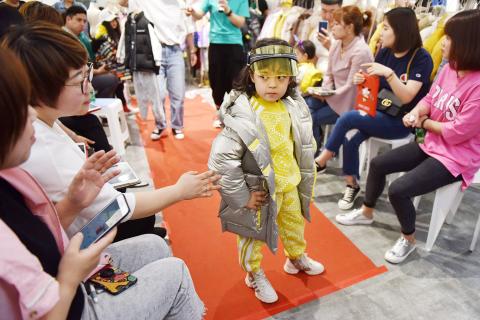
Photo: AFP
“If children do not listen to the parents then I think hitting them is quite standard,” said Lee Ku, founder of Le Show Stars modeling school.
A video of a mother kicking her three-year-old daughter in fury at her failure to comply during a modeling job went viral earlier this year, causing outrage online.
Footage emerged in early August online of a young boy modeling thick winter clothes outside as temperatures soared to 37°C also drew heavy criticism online.
Yet, in an industry where minors can earn 10,000 yuan (US$1,440) a session, the clip is the tip of the of the iceberg and that from his experience, such violent behavior from parents is not unusual on shoots, Lee said.
Child models sometimes go through more than 100 outfit changes in a session, often working from morning till night, but mental health experts say it is not just physical exhaustion they have to contend with — there could be long-term emotional implications.
“Children from the age of zero to six are mentally developing, they need a lot of exploration and freedom,” child psychologist Gong Xueping said.
“At work, the child model will deliberately show a lot of different expressions ... but this is contrary to the child’s own feelings of the moment. This limits the development of both emotional abilities and more complex psychological abilities for children, so I think it is a very bad choice,” Gong said.
Yet there remains no shortage of parents interested in pushing their children into the profession.
Founded three years ago, Le Show Stars was one of the first modeling schools in Beijing, where customers pay up to 800 yuan for a private one-on-one lessons.
Four-year-old twins Yumi and Yuki Xiao are not yet professional models, but for nearly two years they have been taking classes where they are taught how to pose and pace the catwalk.
“For some catwalking competitions, they have to be in the makeup room by 6am,” said Xiao Liang, their father. “The real competition starts at 2pm, and they finish at about 3pm or 4pm. So the whole thing, takes a whole day. From 6am to 6pm — 12 hours is pretty standard.”
Their parents invest in taking them around the country to compete in hundreds of national child modeling competitions.
“It is a lot of fun I like being on stage,” Yumi said.
Like many other parents, their father said he initially enrolled the two in child model ling to build their confidence, but after Yumi and Yuki showed an interest they started to invest more time and money into building a possible career for them.
Occasionally the twins are paid to model seasonal fashion lines for big brands.
“I think they are one of a kind, firstly, they are twins, and they are also boy-girl twins,” Xiao Liang said. “They also like it, which is why we are giving them this opportunity.”
China’s laws around child labor are complicated and parents of underage models are sometimes paid in secret to sidestep the red tape required to employ them.
Responding to the kicking video, Hangzhou authorities introduced regulations to limit the hours children work and ban children under 10 from being brand spokespeople, but many feel authorities are doing too little to protect children from exploitation.
More than 110 child retailers on e-commerce giant Taobao said they would scale back use of young models, and also demanded more regulations.
Thousands have debated the topic online, calling for rules to be tightened to prevent abuse.
“To me, child models are nothing different from child labor. They have to finish their work no matter how tired they are when other children are playing and their short childhoods are lost making money for their parents,” one microblogger said.
Another said that some parents see their offspring only as a “money-making tool,” adding: “The only way is to strengthen regulation, supervision and protection.”
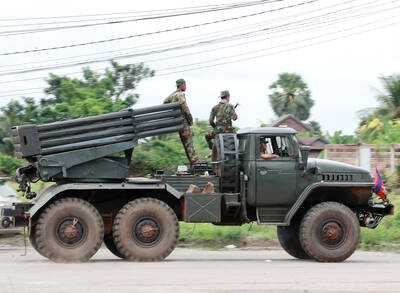
POLITICAL PATRIARCHS: Recent clashes between Thailand and Cambodia are driven by an escalating feud between rival political families, analysts say The dispute over Thailand and Cambodia’s contested border, which dates back more than a century to disagreements over colonial-era maps, has broken into conflict before. However, the most recent clashes, which erupted on Thursday, have been fueled by another factor: a bitter feud between two powerful political patriarchs. Cambodian Senate President and former prime minister Hun Sen, 72, and former Thai prime minister Thaksin Shinawatra, 76, were once such close friends that they reportedly called one another brothers. Hun Sen has, over the years, supported Thaksin’s family during their long-running power struggle with Thailand’s military. Thaksin and his sister Yingluck stayed
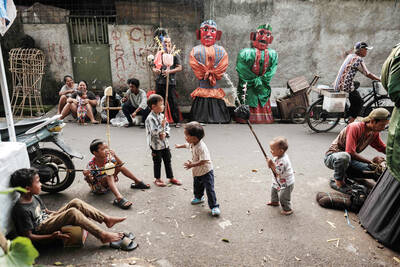
In the sweltering streets of Jakarta, buskers carry towering, hollow puppets and pass around a bucket for donations. Now, they fear becoming outlaws. City authorities said they would crack down on use of the sacred ondel-ondel puppets, which can stand as tall as a truck, and they are drafting legislation to remove what they view as a street nuisance. Performances featuring the puppets — originally used by Jakarta’s Betawi people to ward off evil spirits — would be allowed only at set events. The ban could leave many ondel-ondel buskers in Jakarta jobless. “I am confused and anxious. I fear getting raided or even
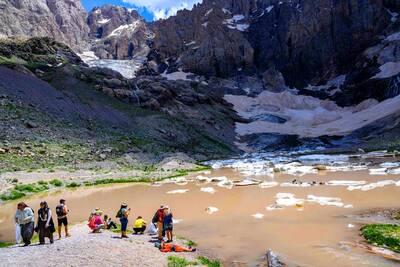
Kemal Ozdemir looked up at the bare peaks of Mount Cilo in Turkey’s Kurdish majority southeast. “There were glaciers 10 years ago,” he recalled under a cloudless sky. A mountain guide for 15 years, Ozdemir then turned toward the torrent carrying dozens of blocks of ice below a slope covered with grass and rocks — a sign of glacier loss being exacerbated by global warming. “You can see that there are quite a few pieces of glacier in the water right now ... the reason why the waterfalls flow lushly actually shows us how fast the ice is melting,” he said.
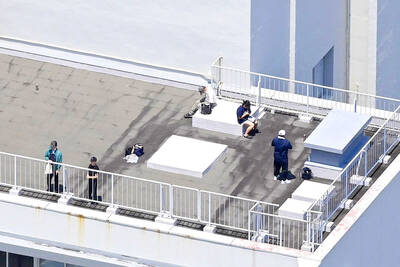
Residents across Japan’s Pacific coast yesterday rushed to higher ground as tsunami warnings following a massive earthquake off Russia’s far east resurfaced painful memories and lessons from the devastating 2011 earthquake and nuclear disaster. Television banners flashed “TSUNAMI! EVACUATE!” and similar warnings as most broadcasters cut regular programming to issue warnings and evacuation orders, as tsunami waves approached Japan’s shores. “Do not be glued to the screen. Evacuate now,” a news presenter at public broadcaster NHK shouted. The warnings resurfaced memories of the March 11, 2011, earthquake, when more than 15,000 people died after a magnitude 9 tremor triggered a massive tsunami that